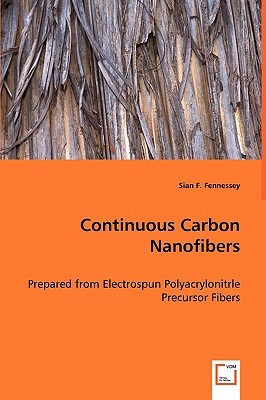
- We will send in 10–14 business days.
- Author: Sian F Fennessey
- Publisher: VDM Verlag Dr. Mueller E.K.
- Year: 2008
- Pages: 140
- ISBN-10: 3639000064
- ISBN-13: 9783639000061
- Format: 15.2 x 22.9 x 0.8 cm, minkšti viršeliai
- Language: English
- SAVE -10% with code: EXTRA
Reviews
Description
The utilization of materials for the preparation of fibers and textiles began at the beginning of civilization and extended until the 20th centruy when steam driven machinery revolutionized the mechanical operations of spinning and weaving. Carbon fibers were first produced by Edison in the late 19th century; Edison found that regenerated cellulose (rayon) could be converted into carbon fila-ments for use in incandescent lamps. Electrospinning was first patented in 1902; electrospinning is a fiber spinning technique that relies on electrostatic forces to produce fibers in the nanometer to micron diameter range. The electrsopinning process of fiber production is examined in regards to the preparation of continuous Polyacrylonitrile (PAN) nanofibers with the purpose of preparing carbon nanofibers for the reinforcement of thin films and nano-composites. The mechanical properties and reinforcing behavior of nanofibers are expected to differ significantly from their conventional counterparts; the strength of a carbon filament increases as the diameter decreases. The research should be especially useful to beginning and experienced researchers in the the field of nanomaterials.
EXTRA 10 % discount with code: EXTRA
The promotion ends in 23d.12:59:10
The discount code is valid when purchasing from 10 €. Discounts do not stack.
- Author: Sian F Fennessey
- Publisher: VDM Verlag Dr. Mueller E.K.
- Year: 2008
- Pages: 140
- ISBN-10: 3639000064
- ISBN-13: 9783639000061
- Format: 15.2 x 22.9 x 0.8 cm, minkšti viršeliai
- Language: English English
The utilization of materials for the preparation of fibers and textiles began at the beginning of civilization and extended until the 20th centruy when steam driven machinery revolutionized the mechanical operations of spinning and weaving. Carbon fibers were first produced by Edison in the late 19th century; Edison found that regenerated cellulose (rayon) could be converted into carbon fila-ments for use in incandescent lamps. Electrospinning was first patented in 1902; electrospinning is a fiber spinning technique that relies on electrostatic forces to produce fibers in the nanometer to micron diameter range. The electrsopinning process of fiber production is examined in regards to the preparation of continuous Polyacrylonitrile (PAN) nanofibers with the purpose of preparing carbon nanofibers for the reinforcement of thin films and nano-composites. The mechanical properties and reinforcing behavior of nanofibers are expected to differ significantly from their conventional counterparts; the strength of a carbon filament increases as the diameter decreases. The research should be especially useful to beginning and experienced researchers in the the field of nanomaterials.


Reviews